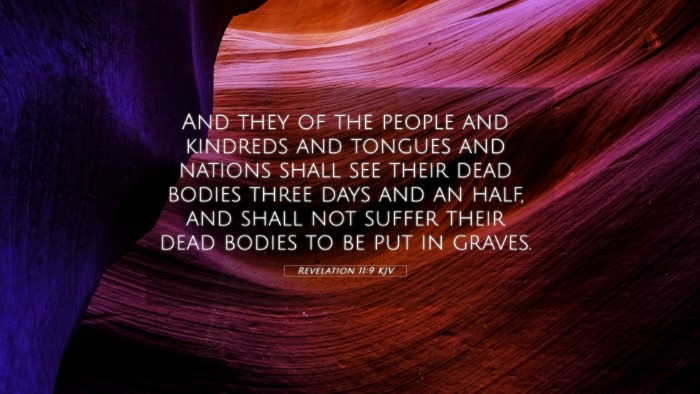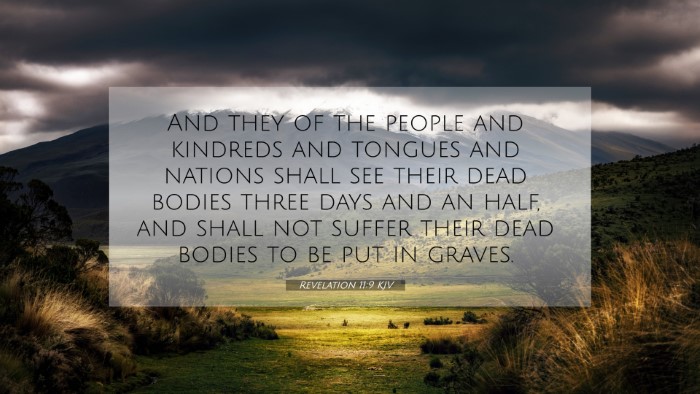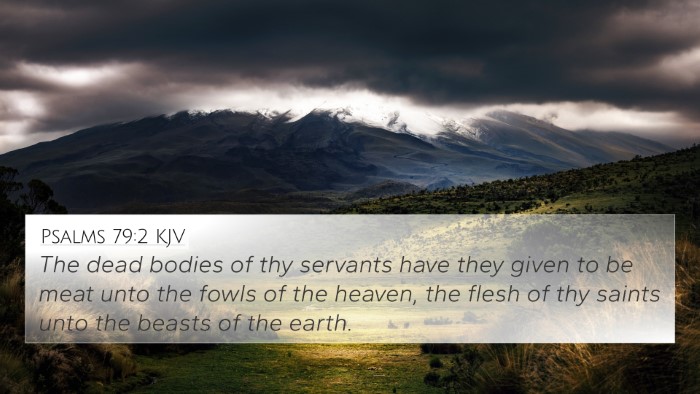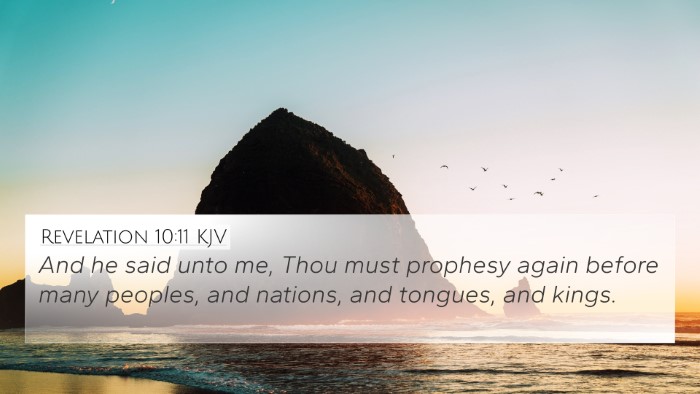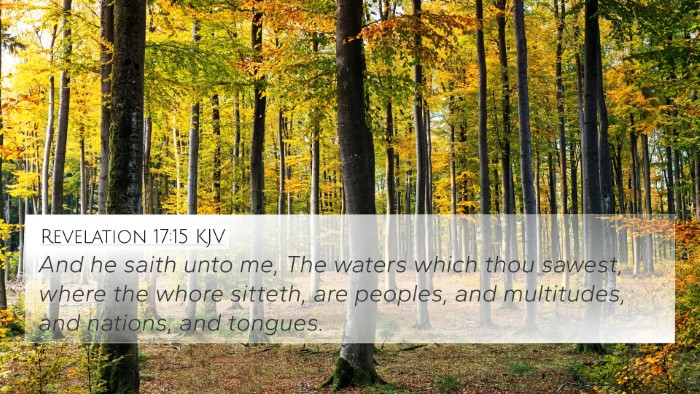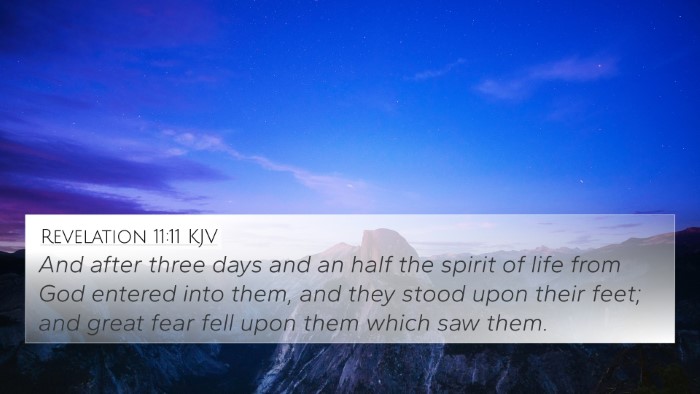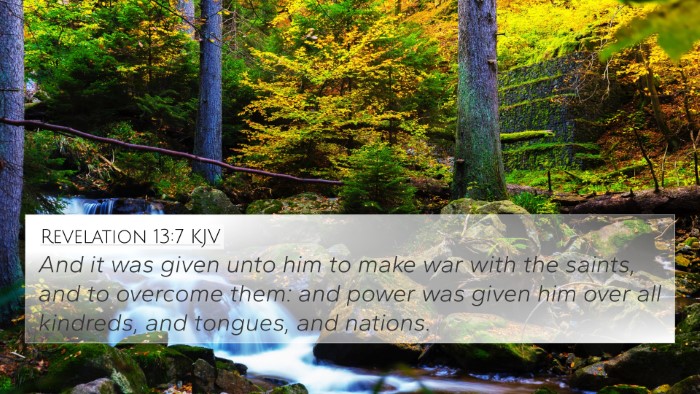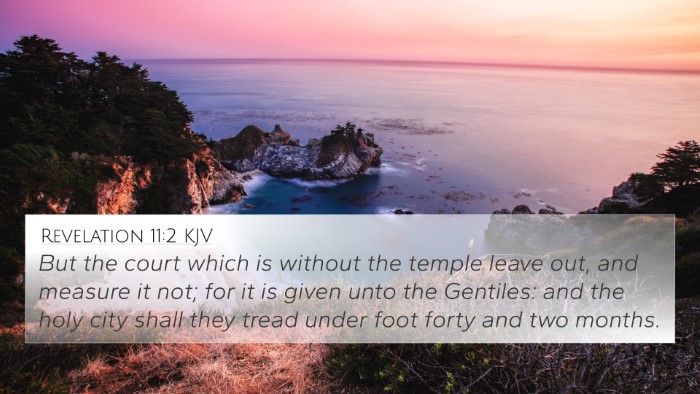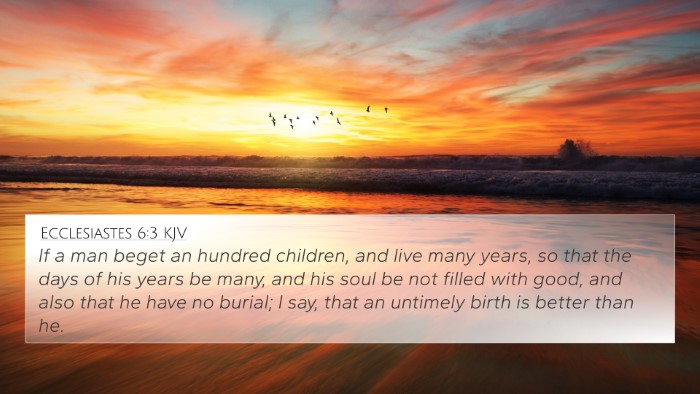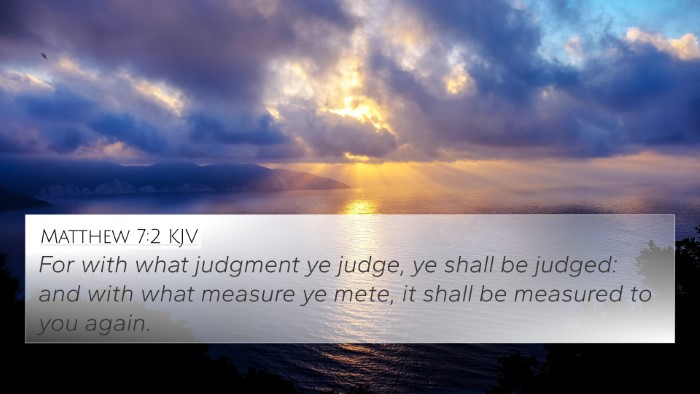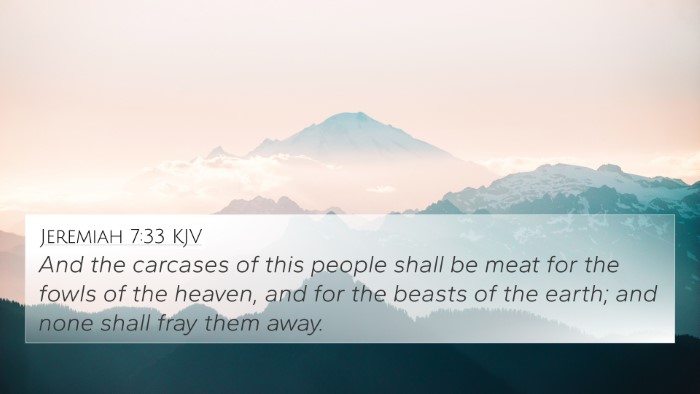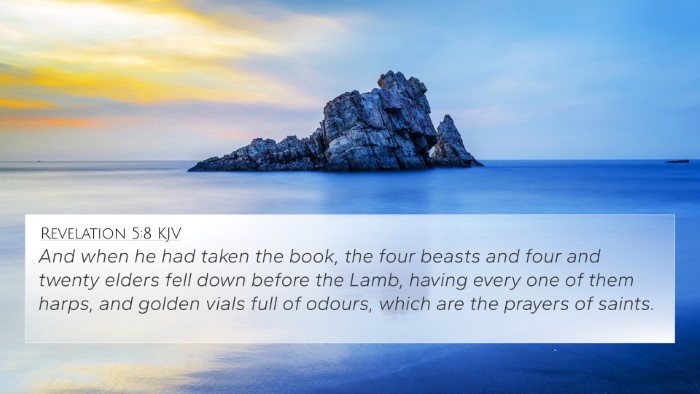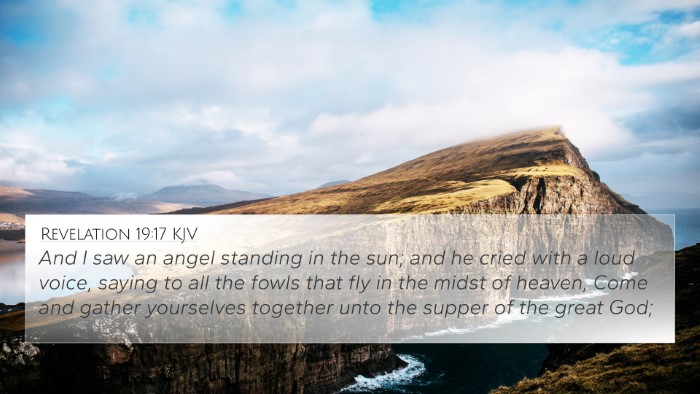Understanding Revelation 11:9
Verse: Revelation 11:9 - "And they of the people and kindreds and tongues and nations shall see their dead bodies three days and a half, and shall not suffer their dead bodies to be put in graves."
In this verse, the imagery of the dead bodies left unburied holds significant meaning within the context of Revelation. The verse centers on themes of divine judgment and societal indifference toward the martyrs of Christ.
Commentary Insights
Matthew Henry's Commentary: Henry emphasizes the shame and reproach associated with the witnessing of the witnesses' dead bodies. He observes that the bodies lying in the street reflects the world's contempt for godliness and how evil seems to triumph over good. The three and a half days symbolize a period when the righteous seem powerless.
Adam Clarke's Commentary: Clarke interprets the "three and a half days" as a period of significant significance, indicative of a time of trial and testing where the faithful are mocked. He notes that the nations' unwillingness to bury these martyrs represents a wider rejection of the truth preached through the witnesses.
Albert Barnes' Commentary: Barnes points out that the public display recalls an ancient practice of disgrace, where enemies left rivals' bodies exposed. This illustrates how the witnesses’ martyrdom is a point of derision for those who oppose God's message, marking a time of great conflict between good and evil.
Thematic Connections
The themes embedded within Revelation 11:9 invite comparisons and connections to various other scriptures. The concepts of persecution, the rejection of truth, and the eventual vindication of the faithful run throughout the Bible.
Related Bible Verses:
- Revelation 6:9-11: Description of the souls of martyrs crying out for justice.
- Matthew 23:37: Jesus lamenting over Jerusalem, reflecting societal rejection of God's messengers.
- John 16:2: Jesus warning that those who kill believers will think they are offering service to God.
- Acts 7:58: The stoning of Stephen showcases the world’s contempt for the faithful.
- 2 Timothy 3:12: Paul states that all who live godly lives will face persecution.
- Hebrews 11:36-38: Accounts of suffering endured by prophets and servants of God.
- Luke 10:16: Rejection faced by those sent by Christ is akin to the martyrs' experience in Revelation.
Cross-Referencing Insights
Understanding cross-referencing in the scripture opens up deeper insight into Revelation 11:9. By examining related verses, one can grasp the broader scope of biblical narrative concerning martyrdom and divine justice.
Tools for Bible Cross-Referencing:
- Bible concordance - Useful for finding specific terms and their occurrences.
- Bible cross-reference guide - Important for connecting themes across scripture.
- Cross-reference Bible study - A method to systematically explore related verses.
- Bible chain references - Tracking themes through linked verses builds a cohesive understanding.
- Comprehensive Bible cross-reference materials - These provide extensive connections and insights across different books of the Bible.
How to Use Cross-References
To effectively utilize Bible cross-references, consider the following steps:
- Identify key themes in Revelation 11:9, such as persecution and societal indifference.
- Explore verses that discuss martyrdom and divine retribution.
- Use a Bible concordance to find relevant keywords and related passages.
- Create thematic maps linking verses such as those listed, assessing how they speak to one another.
- Engage in comparative Bible verse analysis to examine different perspectives on martyrdom.
Conclusion
Revelation 11:9 serves as a poignant reminder of the trials faced by the faithful. The insights drawn from public domain commentaries highlight the enduring conflict between the principles of righteousness and a world often entrenched in spiritual blindness. By employing tools for cross-referencing and exploring thematic connections across scriptures, believers can find deeper meaning and encouragement in their faith journeys.

